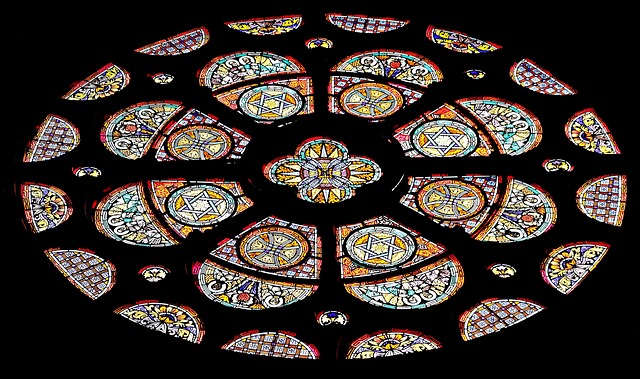When the world turns its gaze toward sustainability, the first things that come to mind are often large-scale solutions: renewable energy farms, electric vehicles, or carbon capture facilities. Yet the most impactful changes can be made in the spaces where people live and work. The humble elements that define the boundaries of our rooms—windows and doors—play a pivotal role in how homes, offices, and public buildings exchange heat and air. By focusing on these often-overlooked features, we can significantly cut energy consumption, lower greenhouse gas emissions, and make the climate transition more efficient and accessible.
How Windows and Doors Shape Energy Flow
Every window and door is an interface between the indoor environment and the outside world. The materials, construction techniques, and design choices used in these components directly affect thermal performance, ventilation, and overall building efficiency.
- Thermal Conductivity – Materials with low thermal conductivity keep warm air inside during winter and hot air out during summer.
- Solar Heat Gain – Proper glazing and shading reduce unwanted solar heating, which otherwise forces HVAC systems to work harder.
- Air Leakage – Sealed joints prevent drafts, meaning less energy is needed to maintain desired temperatures.
The Science Behind Energy Efficiency
Energy efficiency in buildings is largely governed by the heat transfer equation: Q = U × A × ΔT. Here, Q represents the amount of heat exchanged, U is the overall heat transfer coefficient, A is the area of the surface (in this case, windows or doors), and ΔT is the temperature difference between inside and outside. By reducing the U-value of windows and doors, we directly lower Q, thus decreasing the heating and cooling load.
“A single high‑performance window can cut a building’s heating demand by 20%,” explains Dr. Elena Ruiz, a building physics researcher. “When you multiply that effect across thousands of homes, the cumulative energy savings are monumental.”
Modern Windows: From Single‑Pane to Triple‑Glazing
Early windows, typically single‑pane glass with minimal framing, were inadequate for energy efficiency. Today, advances in glazing technology have yielded multi‑pane systems that incorporate low‑emissivity coatings, inert gas fills, and argon or krypton layers. These features drastically lower U-values, often achieving values below 1.0 W/m²·K for well‑designed triple‑glazed units.
In addition to thermal benefits, contemporary window frames made from insulated vinyl, fiberglass, or composite materials further reduce heat loss. The choice of frame also influences aesthetics and durability, but for energy performance, low‑thermal‑conductivity frames are essential.
- Single‑pane glass – U-value ~5.0 W/m²·K.
- Double‑pane with air gap – U-value ~2.0–2.5 W/m²·K.
- Triple‑pane with inert gas – U-value ~1.0–1.3 W/m²·K.
Doors as Energy Gateways
While windows are often the focus of energy audits, doors can be equally critical. Exterior doors that lack proper insulation or have poor seals can lead to significant heat loss. Modern doors now incorporate thermal breaks, insulating cores, and weatherstripping that matches the performance of high‑efficiency windows.
Moreover, the integration of energy‑efficient doors into a building’s envelope is an opportunity to manage airflow. For example, using automatic or partially open vestibules allows for temperature stratification, preventing warm indoor air from rushing out during cold months.
Strategic Placement and Design
Beyond material selection, the strategic placement of windows and doors can influence passive solar gains and natural ventilation. Architects and builders use orientation to maximize winter sunlight while minimizing overheating. Key design principles include:
- South‑Facing Windows – Capture low‑angle winter sun to warm interiors naturally.
- High‑Up Windows – In summer, hot air rises and exits through high windows, reducing cooling loads.
- Operable Windows – Enable controlled ventilation without mechanical systems.
- Glazing Shades – Blinds or exterior louvers that reflect solar radiation during peak heat periods.
Case Study: A Modern Urban Apartment
Consider a newly constructed apartment building in a temperate climate. Each unit features double‑pane, low‑E windows covering 40% of the wall area, complemented by insulated frames. The exterior doors use steel cores with insulated panels and a double‑seal system. Ventilation is achieved through operable windows and a demand‑controlled mechanical system that only activates when indoor air quality sensors detect high CO₂ levels.
Resulting data from the building’s energy monitor shows:
- Heating energy consumption reduced by 28% compared to a conventional design.
- Cooling load lowered by 35% due to optimized window placement and shading.
- Overall annual energy use decreased by 22%, translating to a reduction of roughly 10 tons of CO₂ per unit.
Retrofitting Existing Structures
Many older buildings lack the modern insulation and sealing standards found in new constructions. Retrofitting windows and doors offers a cost-effective pathway to improve energy performance. Options include:
- Installing energy‑efficient secondary glazing systems.
- Replacing single‑pane glass with double‑pane units.
- Adding weatherstripping and door sweeps to eliminate drafts.
- Applying low‑E coatings to existing glass surfaces.
Financial incentives such as rebates, tax credits, and low‑interest loans further lower the barrier to upgrade. When homeowners and businesses invest in these upgrades, the payback period typically ranges from 2 to 5 years, depending on energy prices and climatic conditions.
Materials That Matter
While traditional wood doors offer aesthetic appeal, they may lack durability and insulation if not properly treated. Modern composite doors, on the other hand, combine the appearance of wood with the performance of engineered materials. For windows, manufacturers increasingly use recyclable or sustainably sourced materials. The environmental impact of production, transport, and disposal must be considered, and the life‑cycle assessment of window and door products often shows significant advantages for high‑performance options.
Integrating with Smart Building Systems
Smart controls can transform windows and doors from passive barriers into active energy managers. Key technologies include:
- Automatic shading devices that adjust based on sun position.
- IoT‑enabled operable windows that respond to indoor temperature, humidity, and air quality sensors.
- Smart door locks that can signal occupancy and help control HVAC zones.
- Energy management software that integrates window and door data to optimize building performance in real time.
These systems can create dynamic microclimates within a building, reducing reliance on heating and cooling systems and thereby cutting energy consumption further.
Community‑Wide Impact
When communities adopt high‑performance windows and doors across new construction and retrofits, the aggregate effect becomes a tangible climate benefit. For instance, a city with 100,000 homes that each reduce heating by 5% could collectively save millions of kilowatt‑hours annually, translating to a reduction of several hundred thousand metric tons of CO₂ emissions.
Policy frameworks that set minimum standards for window and door performance—such as the ENERGY STAR program or local building codes—play a crucial role in scaling these gains. By ensuring that every new building meets a baseline of thermal performance, cities can accelerate their pathways to net‑zero emissions.
Future Directions: Adaptive and Responsive Design
Research into dynamic glazing, electrochromic windows, and thermochromic coatings promises to add another layer of intelligence to the building envelope. These technologies can modulate their optical properties in response to temperature, light, or electrical input, allowing windows and doors to act as active control elements.
Emerging materials such as aerogel‑infused panels or graphene‑based coatings are being explored for their superior insulating properties. While these technologies are still in developmental stages, early prototypes suggest that future windows could achieve U-values below 0.5 W/m²·K without sacrificing transparency or structural integrity.
Closing Thoughts
The path to a sustainable future is paved with many seemingly small choices. Windows and doors, often relegated to the periphery of climate discussions, are in fact frontline tools in reducing energy use. By embracing high‑performance materials, thoughtful design, and smart controls, we can make our homes and workplaces more comfortable, economical, and environmentally friendly. The investment in these elements is an investment in the planet—an investment that yields dividends for generations to come.




